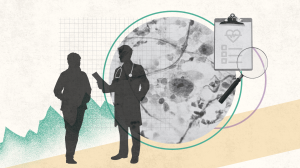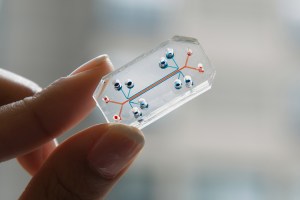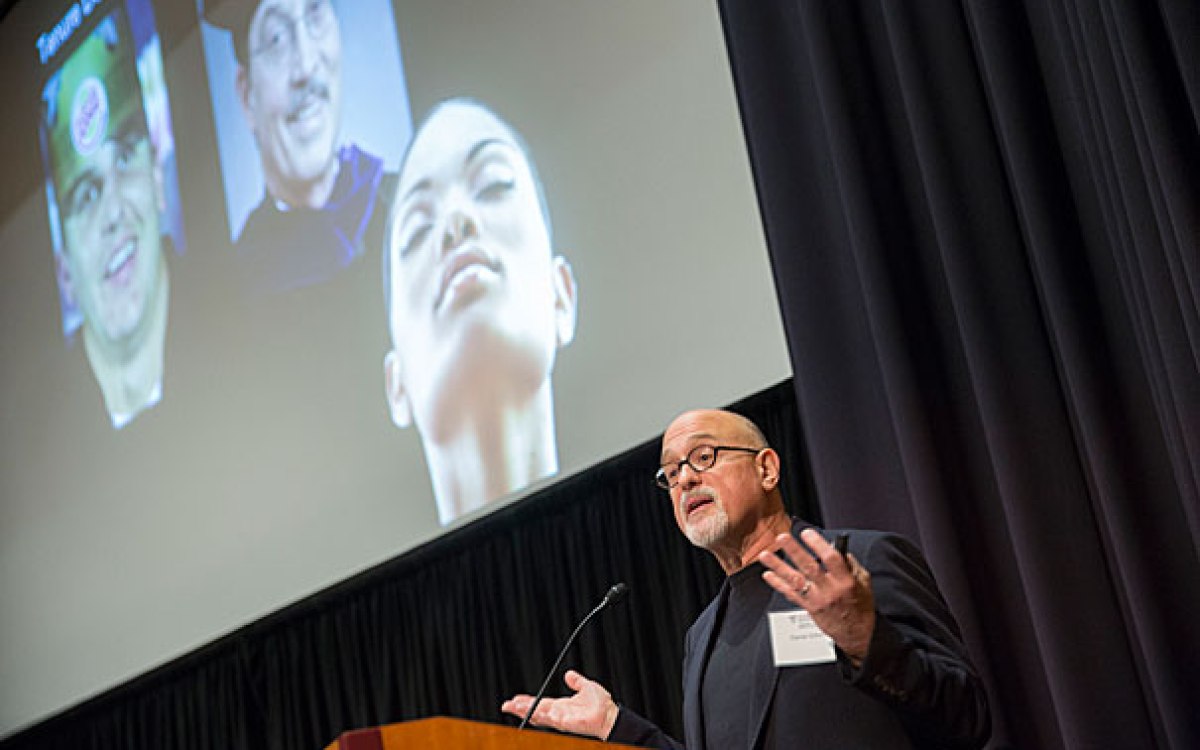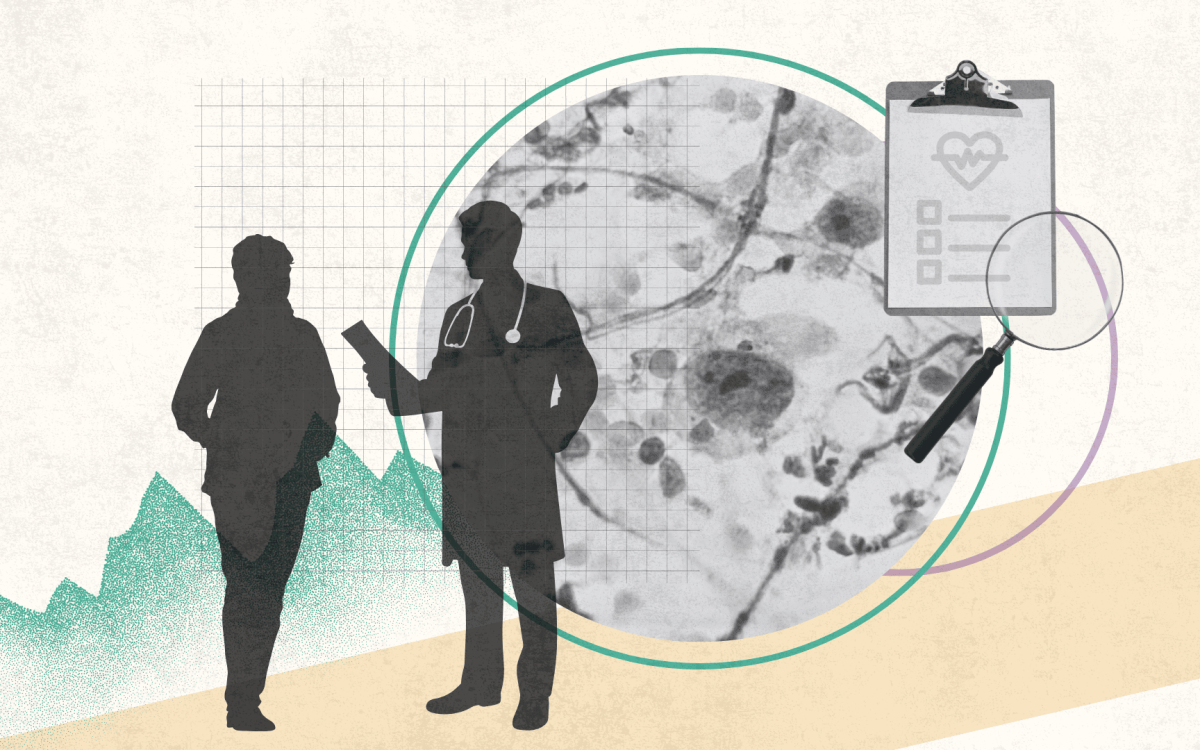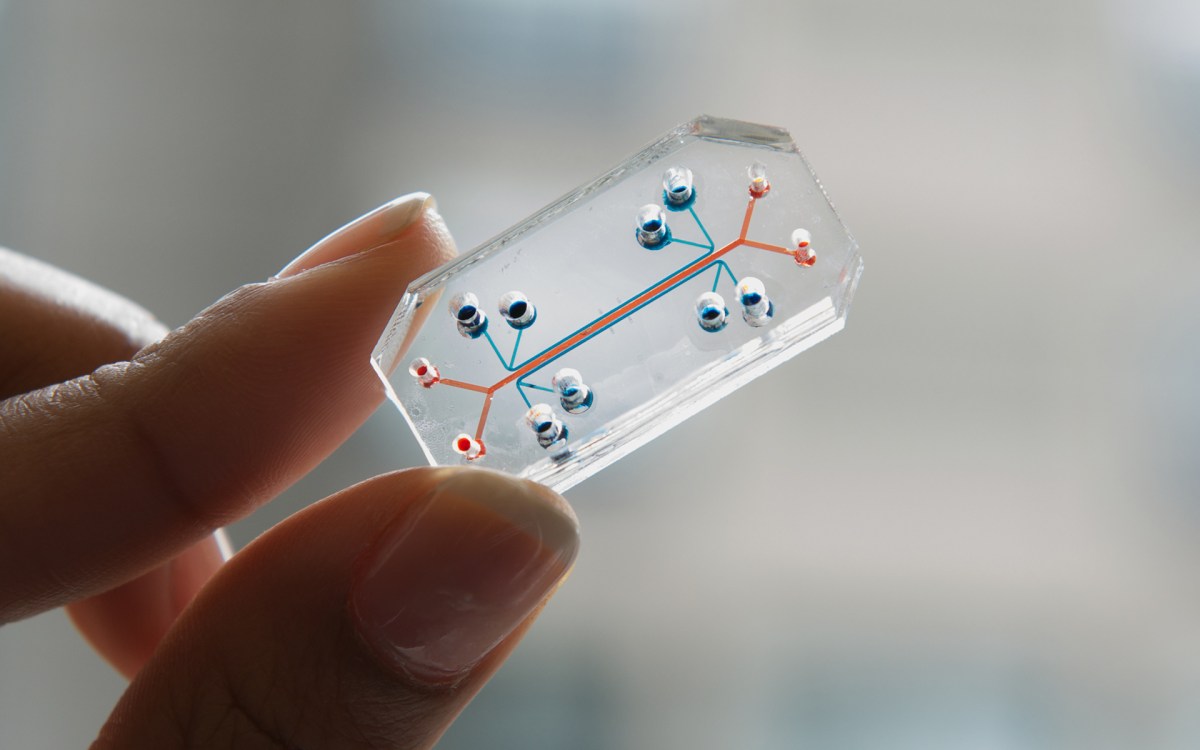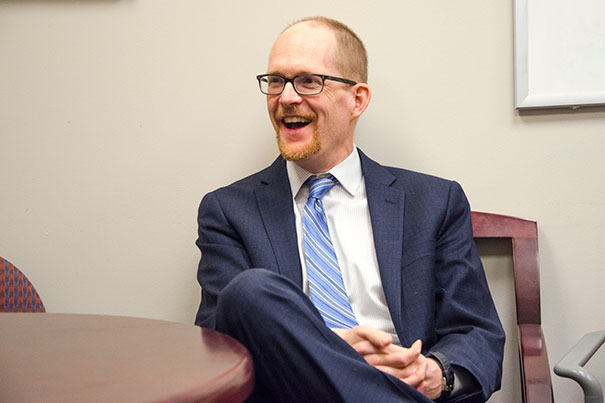
Jeff Huffman, associate professor of psychiatry, runs the Cardiac Psychiatry Research Program at MGH, which emphasizes positive psychology and behaviors, such as goal-setting and expressing gratitude, to improve patient outcomes and long-term health.
Photo by Silvia Mazzocchin
The grateful life may be a longer one
Intriguing results in MGH effort to explore potential health effects of positive thinking
Can a positive attitude save your life?
More like this
There’s not conclusive evidence, but hints are tantalizing enough that researchers from Massachusetts General Hospital and Harvard Medical School are trying to find out.
“A lot of the long-term research says if you’re an optimist, you’re more likely to have better health,” says Jeff Huffman, an associate professor of psychiatry at Harvard Medical School and director of MGH’s Cardiac Psychiatry Research Program.
“Let’s say you’re not an optimist — can we turn you into one? Can we promote that and teach that in a durable way? [And] will it really work [to improve health]? It’s a big and open question.”
The Cardiac Psychiatry Research Program combines exercises designed to promote positive psychology in cardiac and diabetes patients with techniques known to change behavior, such as goal-setting, to encourage patients to adhere to medication regimens, improve their diets, and become more active.
The best chance for a positive outlook to affect health is by promoting exercise, Huffman says. Research over recent decades has shown that exercise is the closest thing we have to a miracle drug against threats such as cancer, heart disease, and diabetes.
Huffman launched the Cardiac Psychiatry Research Program 12 years ago as a way to curb the anxiety and depression that heart disease can set off. He began by treating patients in the cardiac unit at MGH, quickly discovering that his fears of being unwelcome were unfounded. Doctors and nurses recognized patients’ psychiatric needs and were glad to see Huffman tending to them.
A few years later, after reading a 2008 book called “The How of Happiness,” by Sonja Lyubomirsky of the University of California, Riverside, Huffman decided to change his approach. Instead of a focus on treating essentially negative psychological states, he’d concentrate on promoting a positive mind-set.
After emailing Lyubomirsky, he found out that one of her former postdoctoral fellows, Julia Boehm, was working at Harvard with Laura Kubzansky, the Lee Kum Kee Professor of Health and Behavioral Sciences and today co-director of the Lee Kum Sheung Center for Health and Happiness at the Harvard T.H. Chan School of Public Health. Together, the trio reviewed the scientific literature for effective techniques and designed the Cardiac Psychiatry Research Program around them.
“We gave it to some patients with heart disease and they really liked it and since then we’ve been studying not just connections, observationally, between positive psychological states and heart disease, but now we’ve also been studying interventions to try to promote, cultivate, these positive psychological states,” Huffman said.
Patients set for discharge attend an in-person training session and receive a manual with eight to 16 weeks of daily exercises. These exercises include writing letters of gratitude, performing acts of kindness, and reflecting on past successes. Participants also receive a weekly phone call from one of the program’s five trainers, who reviews the previous week, reinforces the positive message, and encourages exercise and other goals.
“I try to emphasize gratitude: Think of three positive events during the week, small or large,” said Carol Mastromauro, a social worker and trainer who has been with the program from the start. “I ask people to practice that if they’re sitting in a traffic jam. In a way, it’s kind of homework. Give yourself a breather, take a mini-vacation.”
The three studies conducted by the program so far have highlighted its ability to improve patient outlooks, Huffman said. Three more now underway are testing the link between a positive mental attitude and health.
“What we’ve learned so far — small but important steps — is that if we ask patients to learn how to identify the good things in their life — write a letter of gratitude, imagine a better future, do acts of kindness — people with heart disease and other chronic illnesses are willing to sign up for the studies, willing to do the interventions and feel better when they do, with increased happiness, decreased anxiety, decreased depression,” Huffman said. “We feel pretty confident about that.
“Next step is: Does that result in changing people’s behavior? That’s what we don’t have data about yet. A lot of clinicians have tried. It’s very hard to get people to eat in a healthy way or become active if they haven’t been doing so for 40 or 50 or 60 years. Our approach is not just giving people these positive psychology interventions but combining them with known behavioral interventions.”
Pankaj Shah joined one of the program’s studies last October, after finding himself in an operating room getting stents placed in the arteries around his heart. At 51, he was carrying 209 pounds on a 5-foot-7 inch frame, having pretty much left exercise behind after graduating college and joining the working world. Not until his 40s, however, had he left smoking behind. And then there was a family history of heart disease.
“We as humans always think that accidents happen to others,” Shah said.
Shah, who was awake for the procedure, remembers something of an epiphany in the operating room. When he was asked to join the study, he didn’t hesitate.
“I said ‘yes’ without thinking, because I knew that Pankaj has to become a new person,” Shah said.
Since then, he’s lost about 40 pounds. His exercise void has been filled with long weekend walks and four-hour bike trips from his home in Winchester to the Charles River and back.
“I’m feeling more at ease with myself,” Shah said. “I used to think, ‘Why would people climb Mount Everest?’ Now I know. When they are on top of that mountain, they are talking to God. I never had that feeling in 51 years. I’m discovering a person I never knew existed inside my body.”
Skeptics might look at Shah’s transformation as that of a man who heard a loud and clear rumble of mortality. And Huffman, for his part, wouldn’t disagree — yet.
“There are two standard responses to our work,” he said. “One standard response is, ‘Well, of course it’s going to work. How can it not help people to feel happier and experience more self-esteem and self-efficacy? You don’t need to do a study about that.’ And then the other group of people is like, ‘This is a bunch of hippie bullcrap. These are people with real disease, what are you doing having them write gratitude letters?’
“And I’m actually in neither of those camps and saying, ‘Well, it sounds like a good idea and there’s some suggestive evidence from observational studies but we don’t actually know a) if we can actually promote — in a durable way — people’s happiness and optimism, or b) even if we do that, if that’s going to have an effect on their health behaviors and their cardiac biology and their outcomes. It’s an unknown.’”
A clinical outcome would mean exciting promise in the battle to promote a healthier population, Huffman said. Unlike expensive drugs and medical equipment, the techniques are relatively cheap and easy to deploy.
“The next step, the Holy Grail in some ways, is not just to increase physical activity, but to have the downstream effect of having fewer cardiac events, being hospitalized less, of reduced health care costs, those kinds of things,” Huffman said. “If we can develop a program that both improves function and reduces cardiac events and, in so doing, reduces health care costs, that would be amazing.”

